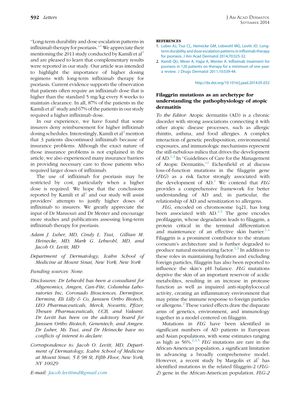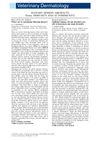Filaggrin Mutations as an Archetype for Understanding the Pathophysiology of Atopic Dermatitis
August 2014
in “
Journal of The American Academy of Dermatology
”

TLDR Filaggrin mutations are linked to atopic dermatitis and help explain how genetics and environment affect the disease.
The document discusses the significance of filaggrin (FLG) mutations in understanding the pathophysiology of atopic dermatitis (AD). FLG mutations are strongly associated with AD and are found in significant numbers of AD patients in European and Asian populations, with prevalence estimates as high as 56%. These mutations result in an impaired skin barrier, dysfunctional regulation of skin hydration and pH, and decreased antimicrobial ability, which may lead to an inflammatory environment and increased exposure to allergens. The authors highlight that FLG mutations contribute to the "atopic march," where a defined genotype predisposes individuals to atopic diseases. The discovery of filaggrin-2 (FLG-2) mutations in African-American populations, which are related to FLG and associated with persistent AD, supports the model that FLG mutations are linked to allergic sensitization and the atopic phenotype. The authors argue that while FLG mutations do not explain all cases of AD, they provide a comprehensive framework for understanding the interplay between genetics, environment, and immune mechanisms in AD.


